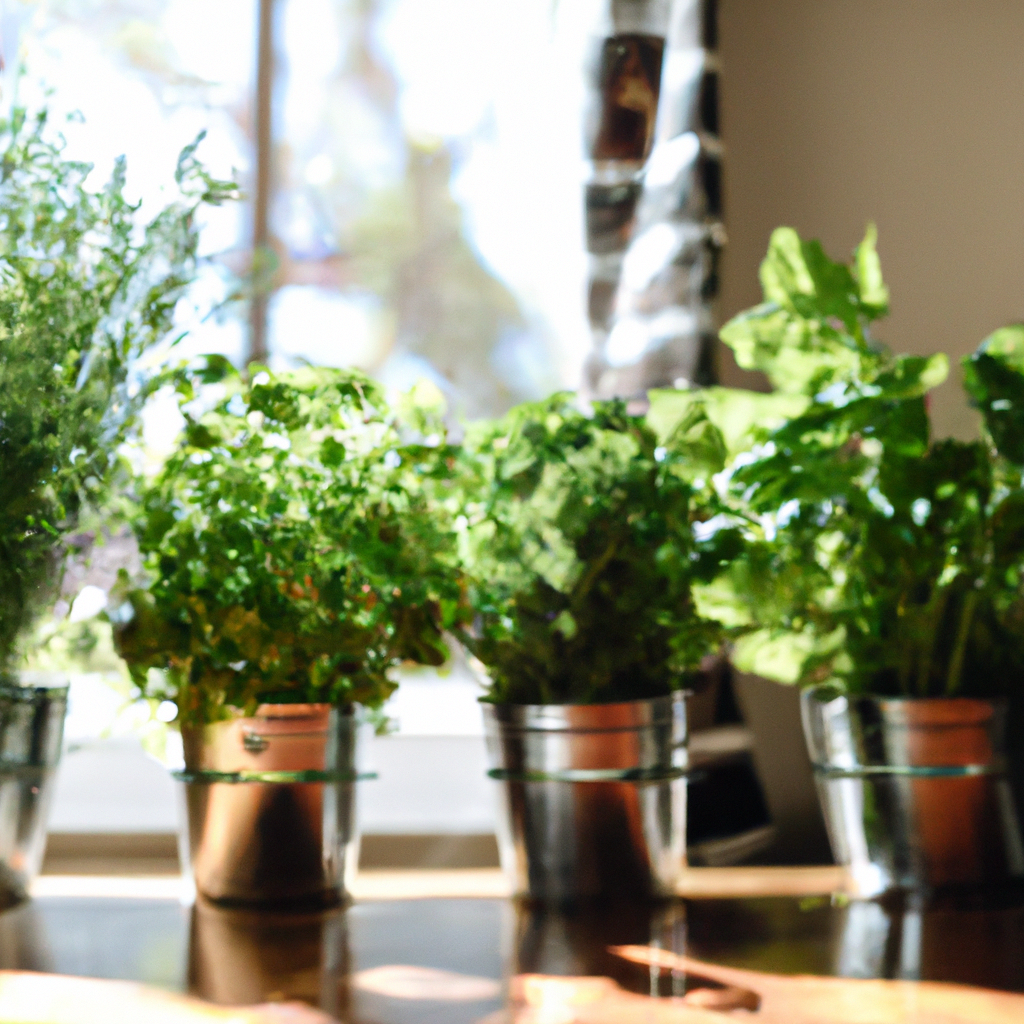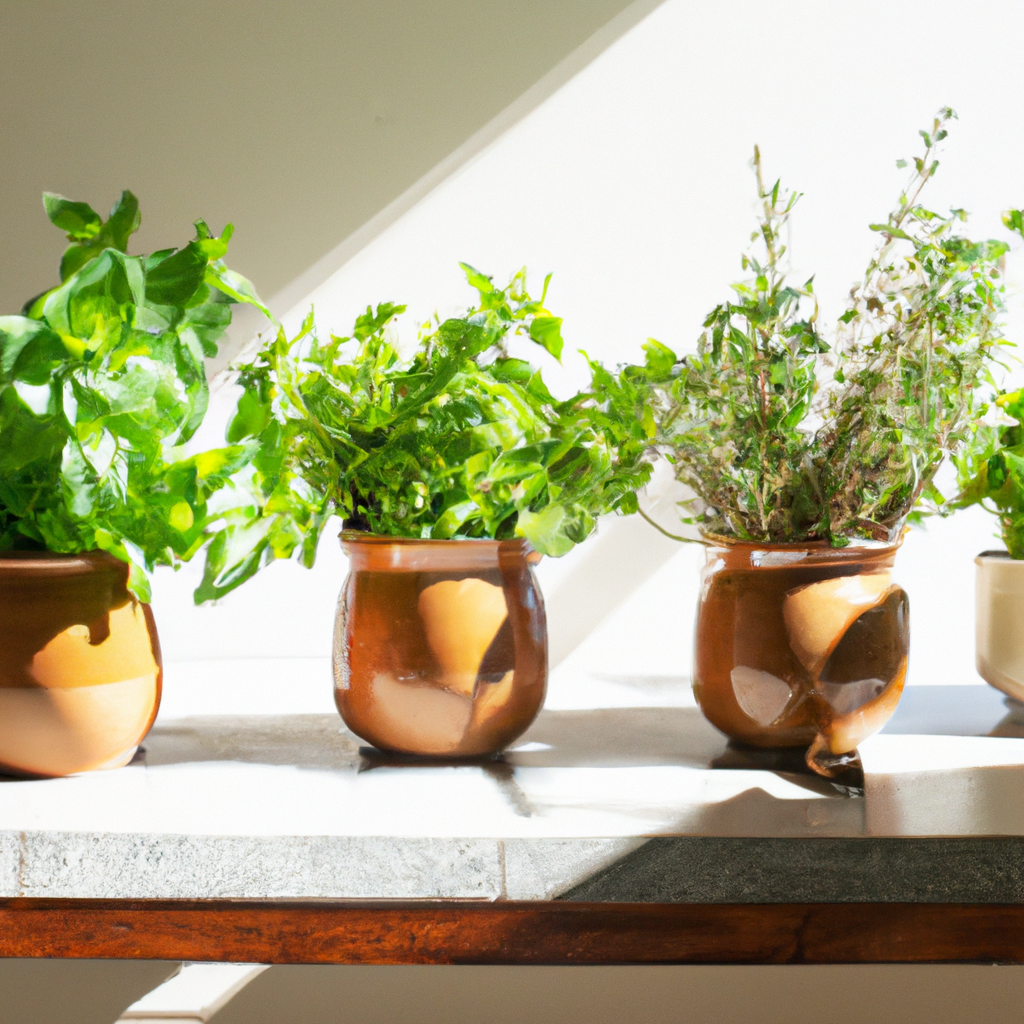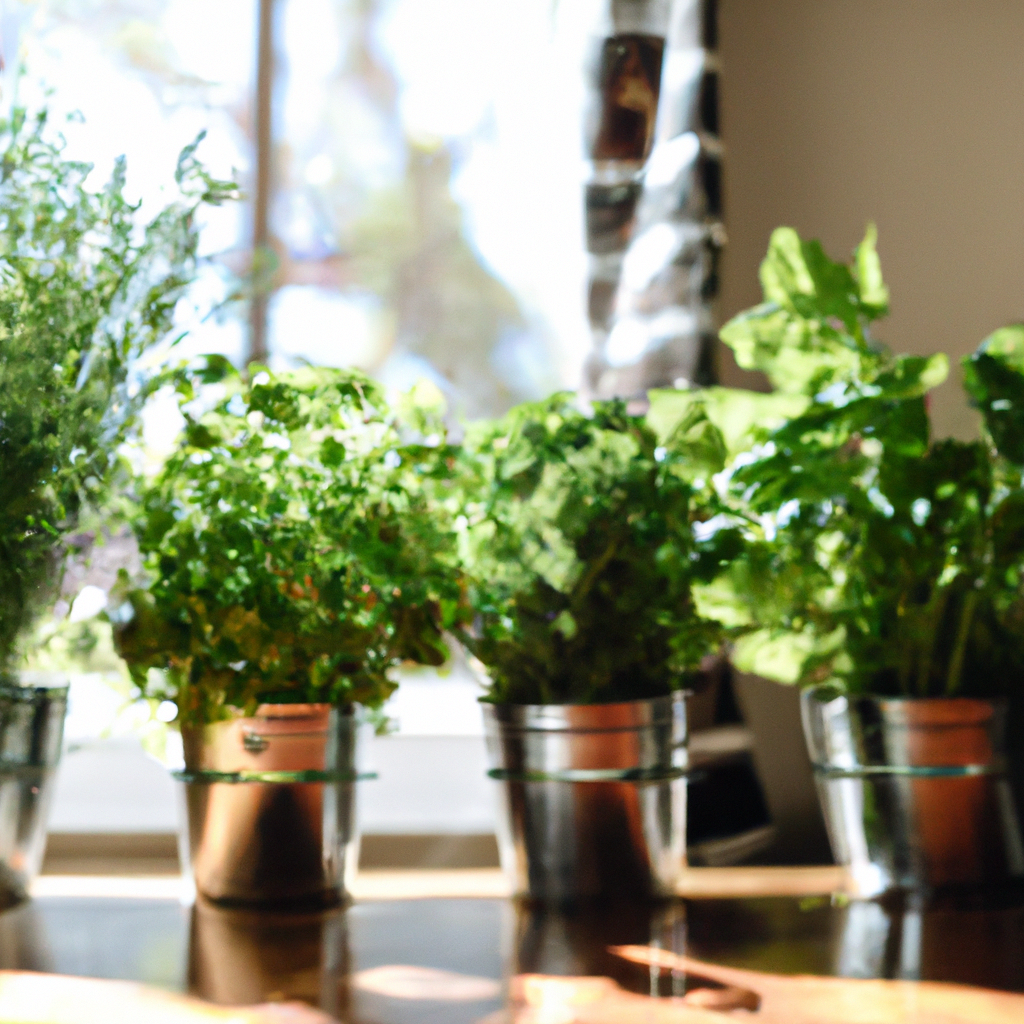Looking to start a home garden but aren’t sure where to begin? This article, “Can I Grow These Herbs At Home?”, is here to guide you. Let’s explore the exciting world of homegrown herbs, learning how to nurture them right at your comfort. From basil to thyme, you’ll discover how feasible it is to convert your kitchen into a living larder. It’s time to ramp up your cooking skills with fresh flavors plucked straight from your kitchen garden. Isn’t it time you added a fresh touch to your meals?

Understanding the Basics of Herb Gardening
Herb gardening at home is a rewarding pastime. Not only does it give you the pleasure of nurturing plants, but it can also enhance your culinary skills by providing fresh, flavorful herbs to elevate your meals.
Why grow herbs at home?
Why would you want to grow herbs at home? Well, one of the key joys that comes from growing your own herbs is the satisfaction of nurturing a plant from seed or seedling to fully grown plant. Not only that, but you have complete control over how the herb is grown – you can choose to grow your herbs without using harmful pesticides, for example.
Benefits of homegrown herbs
Homegrown herbs offer more than just satisfaction. They are fresher and often more flavorful than store-bought herbs. Plus, growing your own herbs can be cost-effective. Once you’ve established your herb garden, you can continually harvest from it rather than buying packaged herbs that may go bad before you have the chance to use them all.
Key considerations for herb gardening
Before you start your herb garden, there are a few important things to keep in mind. You need to know what kind of herbs thrive in your climate and how much space they require, both for their roots and for their foliage. It’s also crucial to understand each herb’s light, water, and nutrient needs. Once you’ve learned the basics, you’re ready to start your herb gardening journey.
Selecting the Right Herbs to Grow at Home
Choosing the right herbs for your home garden is often about your personal preferences and your local climate conditions.
Commonly grown herbs
Some herbs are commonly grown due to their simplicity and wide uses in the kitchen. These include basil, parsley, rosemary, thyme, mint, and chives among others. Each herb has specific needs, so read up about their specific care requirements before you plant.
Selecting herbs based on your cooking needs
When you’re choosing what herbs to grow, consider what herbs you frequently use in your cooking. If you love Mediterranean dishes, you might want to grow herbs like basil and oregano. If you’re fond of Asian cuisine, herbs like lemongrass and cilantro might be more useful to you.
Understanding your local climate and plant hardiness zones
Not all herbs thrive in all climates. Certain herbs prefer cooler temperatures, while others need a hot, sunny climate to grow best. Research your area’s plant hardiness zone and select your herbs accordingly.
Getting Started: Materials and Tools
Once you’ve chosen your herbs, it’s time to gather your materials and tools.
What you’ll need to grow herbs at home
To start your herb garden, you’ll need seedlings or seeds of the herbs you want to grow, pots or containers to plant them in, quality potting soil, and basic gardening tools like a trowel and gardening gloves. Depending on the herbs you choose, you may also need specific fertilizers.
The best type of pots and containers for herbs
Herbs generally need well-draining soil, so a pot or container with drainage holes is a must. The size of the pot should be proportional to the size of the mature plant. Remember, some herbs grow more voluminous than others.
Understanding the importance of soil quality
Good soil is vital for your herbs to grow well. A high-quality potting mix will provide the right structure, nutrients, and pH balance for your herbs. It will also help with proper drainage, which is crucial for most herb varieties.
Must-have tools for herb gardening
You don’t need lots of fancy, expensive tools to start herb gardening. A basic trowel for planting, garden gloves to protect your hands, a watering can, and pruning shears for harvesting are all you really need. As your garden grows, you might find other tools helpful, such as a plant mister or a fertilizer spreader.
Step by Step Process of Planting Herbs
Now that you’re equipped, it’s time to get your hands dirty and start planting!
Starting herbs from seeds
Starting herbs from seeds is a rewarding experience, even if it requires a bit more patience. To start, fill your container with moist potting soil. Plant your seeds according to the packet instructions – some will need to be buried while others can simply be sprinkled on top of the soil. Cover your pot with a plastic bag or wrap to create a mini greenhouse and keep the soil moist until your herbs sprout.
Transplanting seedlings or young plants
If you choose to start with seedlings or young plants, you can skip the waiting period. Simply dig a hole in your pot that’s large enough to accommodate the roots, place the plant in the hole, and fill in around it with soil. Press the soil lightly to make sure the plant is secure.
Properly spacing your herb plants
Each herb needs enough room to grow without competition. The necessary spacing will depend on the mature size of the herb. Clustering herbs too close together can lead to poor airflow and increased disease issues.
When and how to water
Watering needs vary from herb to herb. As a general rule, most herbs prefer evenly moist soil, but not to stand in water. It’s always better to underwater than to overwater when you’re not sure – you can always add more water, but you can’t take it away.

Ideal Conditions for Growing Herbs
Once your herbs are in their pots, there are certain conditions they need in order to grow and flourish.
Understanding sunlight requirements
Most herbs thrive on plenty of sunlight – a minimum of six to eight hours a day. However, some herbs can tolerate less sun, so always check the specific needs of each herb.
Proper watering practices
As mentioned, herbs generally don’t like to sit in water. However, they also don’t want to dry out completely. It’s all about balance with watering, which will require slightly different practices based on the specific herb and your climate.
Temperature and humidity needs for herbs
Each herb has its own preferred temperature and humidity levels. Generally, most herbs prefer a moderate temperature and a somewhat humid environment. Thoroughly researching each herb’s needs will yield the best results.
Growing Herbs indoors vs. outdoors
Whether you decide to grow your herbs indoors or outdoors will depend on your available space, your climate, and your personal preferences.
Pros and cons of indoor herb gardening
Growing herbs indoors allows you to control the climate and avoid pests and diseases better than outdoor gardening. You can also grow herbs all year round. However, it’s sometimes harder to provide sufficient light indoors, and indoor air can often be too dry for some herbs.
Pros and cons of outdoor herb gardening
Outdoor gardening provides more space for herbs to grow and more abundant sunlight than indoor growing. However, it also exposes plants to pests, diseases, and unpredictable weather conditions. Plus, you might not be able to grow herbs in the colder seasons, depending on your climate.
Herbs that thrive indoors
Some herbs that do well indoors include basil, parsley, chives, and mint. These herbs are generally less demanding when it comes to light and are easier to grow for beginners.
Herbs that thrive outdoors
Herbs like rosemary, thyme, and oregano are hardier and can stand up to outdoor conditions better. They require more light and do well in the weather conditions found in many climates.
Understanding Fertilizers for Herbs
Feeding your herbs properly is one of the keys to a thriving herb garden.
The role of fertilizers in growing healthy herbs
Fertilizers provide herbs with the nutrients they need but might not be getting in sufficient amounts from the soil.
The best types of fertilizers for herbs
Organic fertilizers like fish emulsion or worm castings are great choices for herbs’. These fertilizers enrich the soil and provide slow-release nutrition for the herbs.
Fertilizer application guidelines
Follow the instructions on the package to know how much fertilizer to use. Too much can harm your plants just as much as too little. Generally, you’ll fertilize every two to three weeks during the growing season.
Troubleshooting Common Issues in Herb Gardening
Even with careful care, you may face some issues in herb gardening. Here’s how to tackle some of the common ones.
Identifying common pests and diseases
Herbs can fall victim to a number of pests, like aphids and spider mites, or diseases like powdery mildew and root rot. Often, you can treat these with organic controls like insecticidal soap or by improving the growing conditions for your plants.
How to handle over or under-watering
Signs of overwatering include yellowing leaves and wilting, while underwatered plants often have brown, crispy leaves. The key to solving both is to adjust your watering based on the needs of the plant and your climate conditions.
Solutions for insufficient light
If your herbs aren’t getting enough light, they will become leggy, with sparse leaves and weak growth. Moving them to a sunnier spot or supplementing with a grow light can help.
Harvesting and Storing Homegrown Herbs
When your herbs are ready, it’s time to enjoy the fruits of your labor!
When and how to harvest common herbs
Most herbs can be harvested when they’re mature and have abundant foliage – usually just before they bloom for the best flavor. Use a sharp pair of gardening shears to trim off what you need, being careful not to remove more than one-third of the plant at a time.
Best practices for storing fresh herbs
Fresh herbs should be used as soon as possible after harvest for the best flavor. If you need to store them, wrap them loosely in a damp paper towel, put them in a plastic bag, and store in the fridge.
Drying and preserving herbs for long term storage
You can also dry or freeze your herbs for long-term storage. Dried herbs can be kept in an airtight container in a cool, dark place, while frozen herbs can be stored in ice cube trays within the freezer.
Tips and Tricks for Successful Herb Gardening
Finally, a few pro tips can help take your herb garden to new heights.
Maximizing growth with companion planting
Certain plants grow well together and can even help each other fight off pests or attract beneficial insects when planted together – a concept known as companion planting. So research which herbs companion well and try to plant them together.
Maintaining your herbs during off-season
During the off-season, you might have to move your outdoor herbs inside or give them some additional care. Proper care throughout the dormant season ensures your plants come back robustly when the warmer months arrive.
Enhancing flavor through proper care
Herbs need a healthy balance of sun, water, and nutrients to produce the aromatic oils that give them flavor. Giving them the right care will not only result in healthy plants but also tasty herbs for your culinary creations.
Now that you’ve been armed with essential knowledge about herb gardening, it’s time to dig into this rewarding hobby. Remember, gardening is a constant learning process, and patience is a must-have tool! With time, you will pick up more tips and tricks and continue to create an abundant and healthy herb garden. Enjoy your herb gardening journey!



